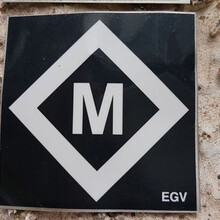If you want to get to know the hiking region around Marsberg, you can use the large circular hiking trail around Marsberg, which is marked by the Sauerland Mountain Association (SGV) with an M in a diamond.
You can start well at the provost church of St. Magnus in Niedermarsberg, about 300m away from Marsberg train station, the one from the Upper Ruhr Valley Railway (from Schwerte via Fröndenberg, Arnsberg, Meschede and Brilon to Warburg). The provost church of St. Magnus is one of the sights of Niedermarsberg. As early as 1040 there was a first St. Magnus church on the same site, a Romanesque building that was so dilapidated in the 18th century that a new building was necessary. We cross the country road and walk south-west along the Bülberg road. We roughly follow the course of the Diemel to the Giershagener Kluskapelle. The Kluskapelle is the remainder of the Niederupsprunge settlement, which fell into desolation in the 16th century. The core of the building dates from the middle of the 12th century. The Kluskapelle was enlarged in the 17th century. The well-known sculptor Heinrich Papen made the altar from limestone, alabaster and Giershagen marble. Behind the Kluskapelle you first pass the country road and then the Diemel and continue hiking into the Hoppecketal to Bredelar. In Bredelar you pass the former Bredelar monastery. Bredelar Monastery was founded in the 12th century and closed in 1804. The Theodorshütte iron foundry was later set up here. Today a museum in the monastery buildings (from the 18th century) provides information about the Theodorshütte. At the level of the Protestant Christ Church, built in 1901, we keep to the left in the Meester-Everts-Weg and hike through a large forest area to Essentho, which lies at the transition from the Sauerland to the Sintfeld. Here we meet the Catholic parish church of St. Anthony of Padua, a quarry stone building from the 19th century. Inside are i.a. a baptismal font from the 16th century and a decorative baroque altar that was originally in the Capuchin monastery in Niedermarsberg. It continues in a north-easterly direction to Oesdorf and from there in an arc to Westheim in the Diemeltal. You walk from the northeast through the village to the neo-Gothic St. Vitus Church, which was built in 1894. In Westheim the Marsberger circular hiking trail crosses the Diemel again and follows the river upwards back to Niedermarsberg.

